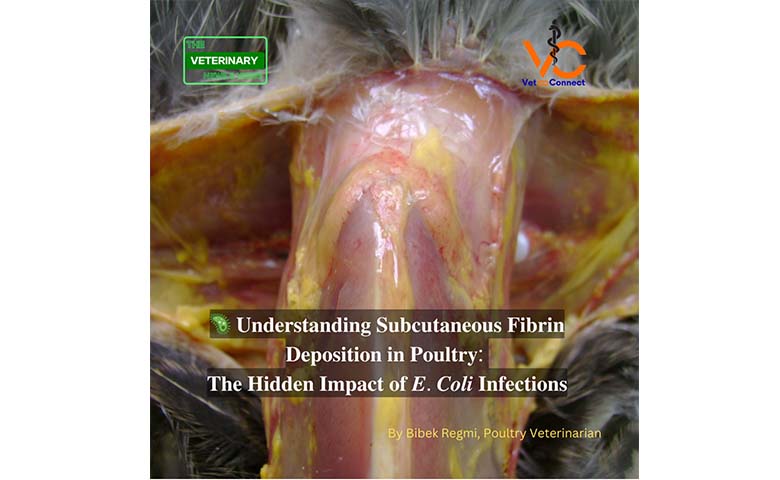By Bibek Regmi, Poultry Veterinarian
🦠 𝐔𝐧𝐝𝐞𝐫𝐬𝐭𝐚𝐧𝐝𝐢𝐧𝐠 𝐒𝐮𝐛𝐜𝐮𝐭𝐚𝐧𝐞𝐨𝐮𝐬 𝐅𝐢𝐛𝐫𝐢𝐧 𝐃𝐞𝐩𝐨𝐬𝐢𝐭𝐢𝐨𝐧 𝐢𝐧 𝐏𝐨𝐮𝐥𝐭𝐫𝐲: 𝐓𝐡𝐞 𝐇𝐢𝐝𝐝𝐞𝐧 𝐈𝐦𝐩𝐚𝐜𝐭 𝐨𝐟 𝑬. 𝑪𝒐𝒍𝒊 𝐈𝐧𝐟𝐞𝐜𝐭𝐢𝐨𝐧𝐬

In the world of poultry health, 𝘌. 𝘊𝘰𝘭𝘪 infections often manifest in surprising and challenging ways. One of the most telling signs? 𝐅𝐢𝐛𝐫𝐢𝐧 𝐝𝐞𝐩𝐨𝐬𝐢𝐭𝐢𝐨𝐧 𝐢𝐧 𝐬𝐮𝐛𝐜𝐮𝐭𝐚𝐧𝐞𝐨𝐮𝐬 𝐭𝐢𝐬𝐬𝐮𝐞.
When 𝘌. 𝘊𝘰𝘭𝘪 strikes, the body responds with an inflammatory reaction, leading to the accumulation of fibrin—a protein that normally helps with blood clotting—under the skin. This results in yellowish, thickened patches, a condition known as 𝐜𝐞𝐥𝐥𝐮𝐥𝐢𝐭𝐢𝐬.
While this is the body’s attempt to contain the infection, it also causes significant tissue damage. For producers, this means potential downgrading or even condemnation of birds during processing, translating to economic losses.
Recognizing and understanding fibrin deposition in 𝘌. 𝘊𝘰𝘭𝘪 infections are key to better prevention and management, ultimately safeguarding poultry health and productivity.
#PoultryHealth #VeterinaryMedicine #Ecoli #AnimalHealth #PoultryIndustry #Biosecurity